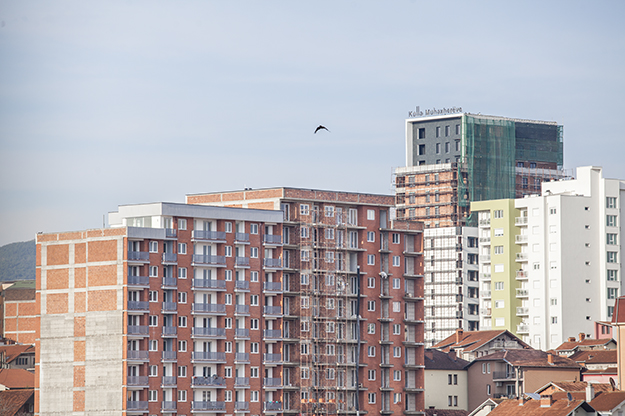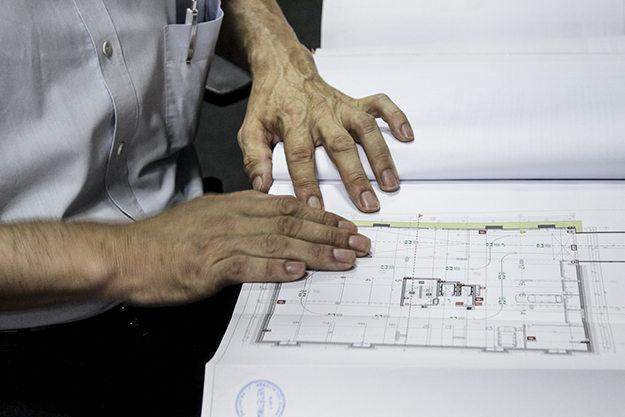Summer 2017 has seen a spate of deadly building fires in Europe and around the globe, most recently in the outskirts of Split, and Honolulu and Oakland in the United States, not to mention the Grenfell Tower disaster in London. It’s a phenomenon that has caused concern about building safety everywhere, prompting K2.0 to look into the situation in Prishtina to see how prepared the city is for fires and other catastrophes.
The number of illegally constructed buildings that appeared all over Prishtina after the war only adds to concerns around safety. Many buildings were built without permits and did not go through the necessary safety inspections and legal processes.
The Directorate of Urbanism at the Municipality of Prishtina has confirmed to K2.0 that specific building guidelines and codes for construction in Kosovo do exist, and that they do not approve any construction plans that do not adhere to them. However, the regulations were only legally required to be developed the last time Kosovo’s construction laws were amended in 2012, meaning these codes are at most five years old, and most people K2.0 spoke to in the construction world seemed unaware of their existence.
Astrit Nixha, head of the Architects’ Association of Kosovo believes that while building codes used to be sacrosanct in Yugoslav times, they are not adhered to as strictly as they should be in the architectural world today. “I can tell you that whoever graduated in Prishtina University before 1991 apply the codes,” Nixha states.
After 1991, when Kosovo Albanian professors were dismissed en masse from the university for refusing to teach a newly imposed Serbian curriculum, architecture, alongside most other subjects, was taught in a parallel education system outside of the state. It’s at this point that Nixha believes that building codes became secondary, stating his belief that graduates after 1991 rarely know about codes, and thus do not incorporate them into their building designs.

The close proximity of buildings in the capital is a phenomenon that concerns architects, developers and firefighters. Photo: Majlinda Hoxha / K2.0.
Arben Hyseni, project manager for Labi Com, a Prishtina-based construction company operating for around 30 years insists that his company follows European codes, not dissimilar to those of countries like Germany and neighboring Serbia. “From the beginning until now we have not worked without a license,” states Hyseni, though he also expressed concern at the amount of buildings built without permits that now stack dangerously close together.
Labi Com’s business consultant, Besim Callaku, explained the business benefits of adhering to guidelines and codes. “We follow the codes because we think that after 20 years we might have problems with buyers [if we don’t],” say Callaku, adding that in recent years there has been an increased knowledge of consumerism with people more likely to want to see potential homes before purchasing or renting.
However with Kosovo very much located in a seismically active zone, many of Prishtina’s buildings are not equipped to face any potential disasters, man-made or natural. When it comes to buildings that are more likely to withstand earthquakes, Nixha points again in the direction of older buildings: The older the better. “Since I’m an architect and friends ask me, ‘Where should I buy a flat?’ I always say, ‘In the old parts, the old buildings,’” he says. “Whatever was constructed before the war, I tell them to buy.”
He believes pre-war buildings are more likely to have the codes implemented, the structure and materials up to standards, and with seismic calculations made. The same cannot be confirmed about newer buildings, as the boom of illegal buildings started after the war. The Privatization Agency of Kosovo announced last year that it had identified “2,500 illegal buildings on public enterprises’ land.” When current mayor of Prishtina, Shpend Ahmeti, took office in 2014, the Municipality of Prishtina issued a report stating there were 46,000 illegal constructions in the city.
Since demolishing such a huge number of buildings might be unrealistic, the Ministry of Environment and Spatial Planning proposed a law that allowed the registration of illegally-built buildings, which was passed in December 2013. Every square meter of a building built without a permit is being charged five euros for legalization, which is even lower than obtaining a permit before construction.
Nixha says this is a big problem and an injustice to investors who wanted to start construction legitimately. “Investors who want to do the proper professional work are now squeezed into something they cannot get out of,” Nixha says. “Once they finished [construction], they were in credit [with banks], they paid their licenses, all of them, and they have to compete with these people without licenses, without upfront payments in price — they cannot.” He points toward corruption in the government and favoritism shown by officials toward investors they know personally.


